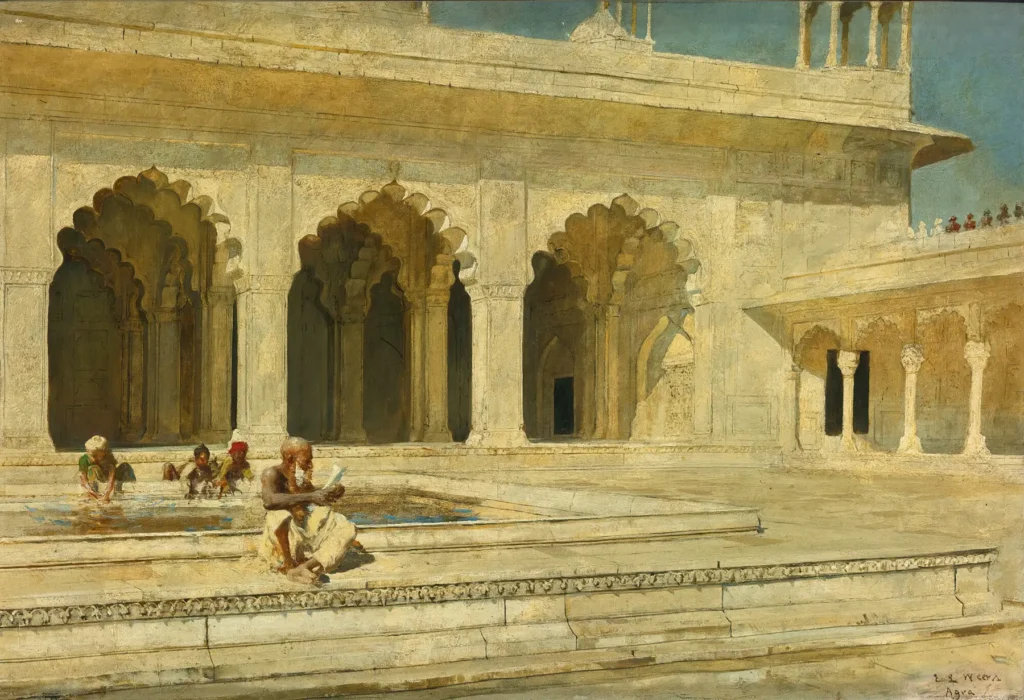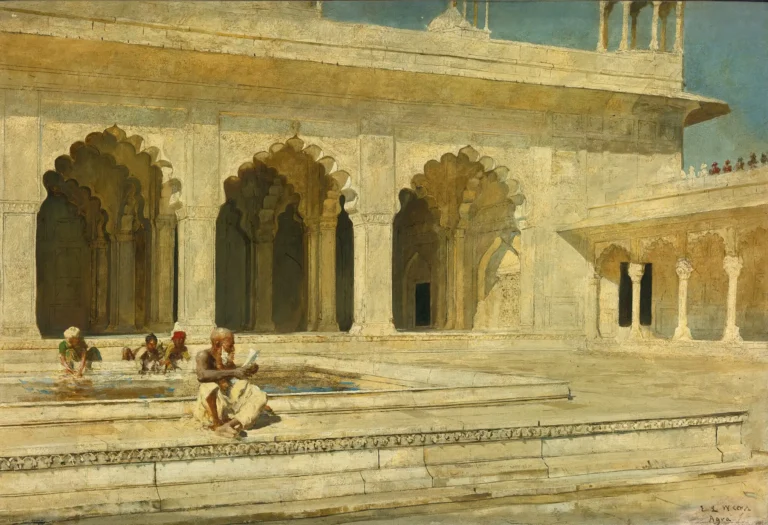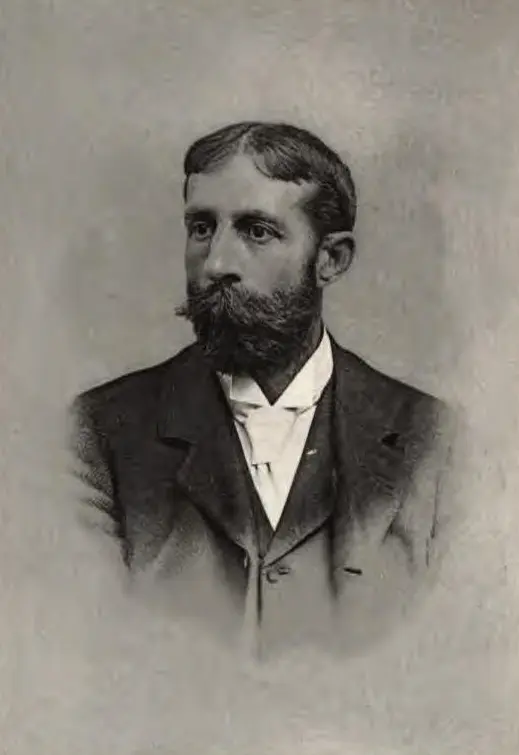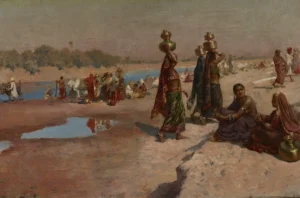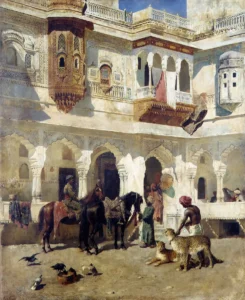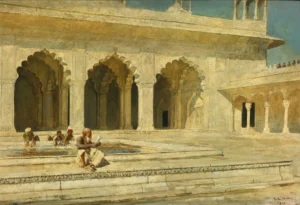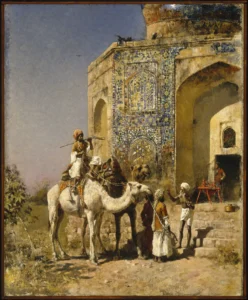The Pearl Mosque, Agra
This stunning painting portrays a serene scene within the Moti Masjid in Agra, India, during prayer time. Edwin Lord Weeks's mastery in rendering light and textured surfaces brings life to this sacred moment. His influence from prominent academic traditions and personal exploration in the East combines to create a work that is not only a historical document but also a vivid expression of faith and cultural heritage. The painting serves as a testament to Weeks's skill and passion for capturing the beauty of the East, which resonated greatly with audiences at the time.
Late 19th Century, 1889
About the Artwork
Created during his second journey to India, "The Hour of Prayer at the Pearl Mosque, Agra" captures a moment of reverence and spirituality. The Moti Masjid, commissioned by Mughal Emperor Shah Jahan, serves as a magnificent backdrop for the scene. Weeks found beauty in the daily lives of those around him, and this painting reflects not only his deep appreciation for Indian culture but also his ability to transport viewers to another world. The painting’s Gold Medal recognition signifies its impact and the admiration it received, encapsulating the fascination with the East during the late 19th century that characterized the Orientalist movement.
Did You Know
Liked what you see? Add it to your collection.
Enjoyed reading? Share it.
... continued
Artist and Background
Edwin Lord Weeks was an American artist, painter, illustrator, photographer, writer, explorer, and collector. He was trained in Paris under notable artists such as Jean-Léon Gérôme and Léon Bonnat, which influenced his style and subject matter, particularly in his depiction of oriental scenes.
The Artwork
"The Hour of Prayer at the Pearl Mosque, Agra" was created during Weeks's second trip to India. The painting captures a moment of prayer at the Moti Masjid (Pearl Mosque), a 17th-century congregational mosque within the Agra Fort, built by Mughal Emperor Shah Jahan.
Recognition and Exhibitions
This painting was awarded a Gold Medal at the 1889 Paris Salon, where Weeks's works garnered significant public attention. The painting is housed in its original frame, designed by Lockwood de Forest, an American painter and designer who was also an admirer and promoter of South Asian art and craft.
Provenance and Exhibitions
The painting has been part of several exhibitions, including "Romance of the Taj Mahal," which traveled to various museums such as the Los Angeles County Museum of Art, the Toledo Museum of Art, the Virginia Museum of Fine Arts, and the Asia Society between 1989 and 1991.
Style and Influence
Weeks's work during this period, such as "The Hour of Prayer at the Pearl Mosque, Agra," reflects a detailed realism, possibly influenced by his experiments in photography. His style was shaped by his training in French academic painting and his travels to exotic locations.




